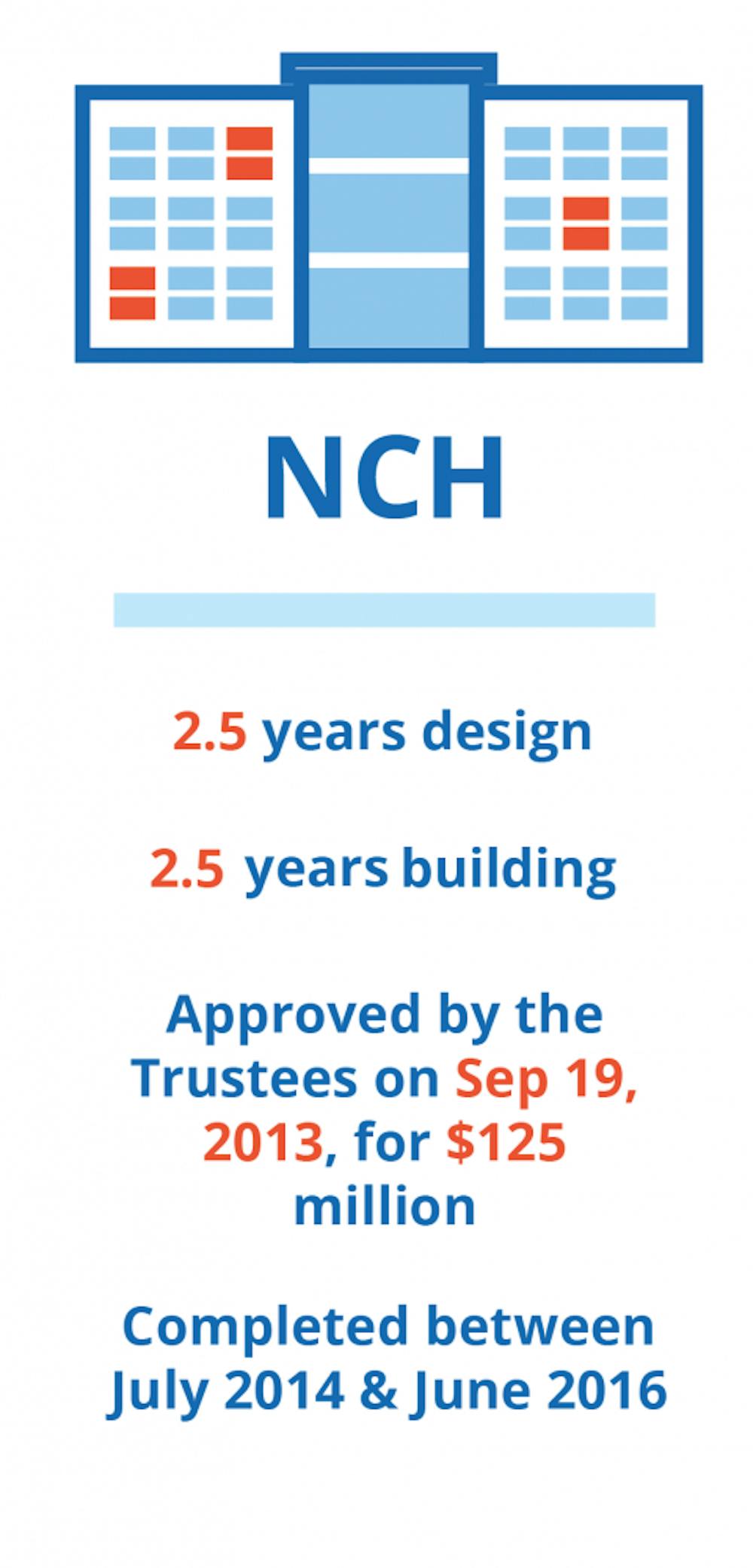
New College House has been recognized by Penn students for its innovative design and desirable features, like in-room TVs and air conditioning. However, it has also received praise on a citywide and national level for its commitment to sustainable and ethical practices.
NCH was built with Penn’s Climate Action Plan 2.0 in mind, according to the plan's website. The Climate Action Plan was enacted in 2009 to promote green living on Penn’s campus with an emphasis on climate conservation.
Upon its completion, the college house received the Leadership in Energy and Environmental Design Gold Certification from the U.S. Green Building Council, which scores various building structures on criteria ranging from innovation to water efficiency.
Yet, despite recent efforts to promote sustainable infrastructure in University City and West Philadelphia, the neighborhoods have significantly fewer green buildings than Center City and other areas of Philadelphia do, according to a graphic produced by the City of Philadelphia’s Office of Sustainability.

Philadelphia also ranked 11th in the 2017 Green Building Adoption Index's annual list of eco-friendly cities in the U.S., falling from its 2016 10th place standing.
“Some of that just has to do with density. There are taller and bigger buildings in Center City,” Marketing and Communications Fellow for the City of Philadelphia’s Office of Sustainability LeAnne Harvey said.
Harvey said West Philadelphia’s history as a more residential area contributes to the state of its current infrastructure, but added that she expects the neighborhood to “see a lot more development” over the next five years.
“It’s not as scary anymore for building owners and energy project managers, who see the payoff,” Harvey said. “There are more resources in place and models to look to to carve out a space for green infrastructure and sustainability.”
Independent of Penn’s Climate Action Plan, outside groups have started initiatives to create an accountability system for building owners in the West Philadelphia area. Philadelphia 2030 District, a project started by Green Building United, hopes to reduce energy and water use, and transportation emissions in a defined area that includes the majority of Penn’s undergraduate campus.
Members of the project include Drexel University, the City of Philadelphia, and SEPTA. Penn was not listed as a participant in the initiative.
NCH strives for many of the same goals as Philadelphia 2030 District, including green initiatives within the house to reduce energy emissions.
Classical Studies professor and Faculty Director Campbell Grey lives in NCH with his family and said NCH’s commitment to the environment informs student and faculty experiences within the building.
“It's exciting to be able to use our own building as a foundation for our conversations … [about] the intersections between sustainability and social engagement,” Grey said. “We're living within an explicit expression of these principles, and can use it as a daily inspiration."
Still, Harvey said that Penn remains a leader in West Philadelphia for promoting green initiatives.
“The academic dialogue that’s coming out of Penn is really important for the city,” Harvey said. “Penn is creating a lot of sustainability leaders that are doing a lot of great work throughout the city.”
The Daily Pennsylvanian is an independent, student-run newspaper. Please consider making a donation to support the coverage that shapes the University. Your generosity ensures a future of strong journalism at Penn.
Donate





